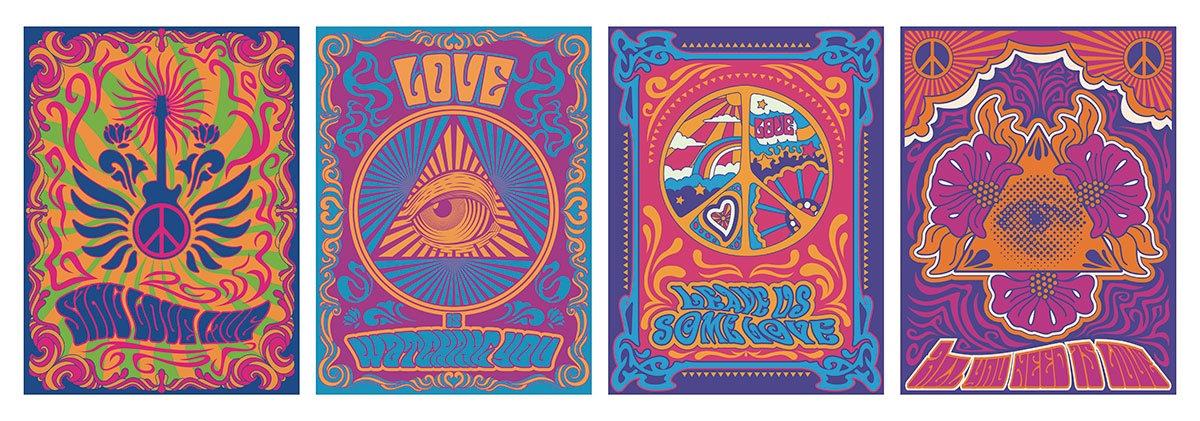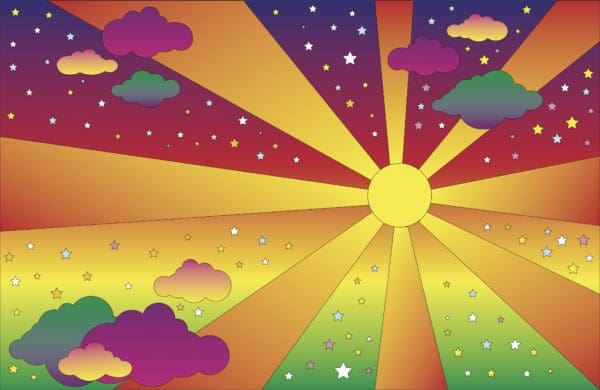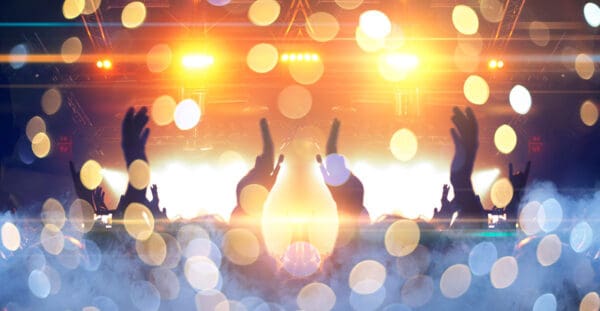Psychedelics and art are both a way to expand the mind, express one’s true nature, and question repressive forces. From the colorful posters sighted in San Francisco in the 1960s to modern-day glitchy art on Tumblr, art and psychedelics have always had a synergetic and bidirectional relationship. And while the colonization of psychedelics ignored many artists for too long, modern technology may finally give them the recognition they deserve.
What is Psychedelic Art?
Psychedelic art is art inspired by or meant to recreate the experience of psychedelic medicines such as LSD, psilocybin, MDMA, DMT, and more. Psychedelic experiences often inspire art from this genre—notable artists such as Yoko Ono credit psychedelic experiences as a muse for their artwork.
Other art can enhance a psychedelic experience. In a Reddit discussion on a psychedelic drawing of a tree and a house, one user writes, “Last time I saw this on acid, I saw a face immediately. Looking at this puts me right back into the trippy mindset.” For another user, the trees are simultaneously freaky and a source of solace. “Why do trees look so creepy? They always look like alien leathery hands with wood knot eyes staring at me… They also take on a strange maternal feeling too. Threatening but comforting at the same time.”
Furthermore, the genre also encompasses art created during a trip. Some contain all of the above at the same time. While there is no direct research on art and psychedelics, studies such as a 2018 study on psilocybin for patients suffering from treatment‐resistant depression suggest the psychedelic increases insightfulness and openness, two traits associated with creativity.
The History of Psychedelic Art
The word “psychedelic” was first coined in 1957 by British psychiatrist Osmond Humphrey. He created the term using the Greek words psyche (mind) and delos (make visible). By this definition, psychedelic means “mind-manifesting” and encompasses all art, whether literally inspired by psychedelic drugs or not.
Surrealism is considered a forefather to psychedelic art. Whereas surrealism draws inspiration from dreams, psychedelic art draws inspiration from psychedelics. One only has to gaze upon Salvador Dali’s melting clocks to see the similarities between the two genres. The pop-art movement of the 1950s, which drew inspiration from popular culture and highly saturated colors, is also a precedent to the psychedelic art movement.
Psychedelic art became popular in the Western world during the 1960s as part of the hippie counterculture movement. The signature elements of psychedelic art from this period include bright colors, distorted and otherworldly visuals, and kaleidoscopic patterns. These aesthetics often mirrored the social, cultural, and politics of the hippie counterculture movement. Album covers, anti-war posters, and eventually mainstream corporations all utilized psychedelic art to promote their message. Famous artists from this period include Wes Wilson, Rick Griffin, and Victor Moscoso. Psychedelia is a term sometimes used interchangeably with psychedelic art. Psychedelia refers to music, culture, and other art forms inspired by psychedelic drugs, mainly created during the 1960s.
Most of the well-known psychedelic artists from this time frame were white and male. Black artists and women are unfortunately misrepresented. Some notable female psychedelic artists include Marije Koger, known as the Mother of Psychedelic Art, who is best known for her album cover artworks for the Beatles. Koger was the leader of the psychedelic art collective The Fool. Today, Black psychedelic artists such as Vernon O’Meally, who creates vivid psychedelic art using charcoal, are finally being recognized.
Psychedelic Art Meets Music
During the late 1960s and early 1970s, psychedelic art became heavily integrated into music. In particular, artists such as Jimi Hendrix, who used psychedelics to inspire their music, worked with psychedelic artists like Karl Ferris, the pioneer of psychedelic photography. Ferris shot the iconic Are You Experienced? Jimi Hendrix album cover.
Psychedelic art also made its way into live concerts. While art shows and set design continue to use psychedelic art today with modern technology, during the 1960s, the novel psychedelic art shows at concerts often used oil and dye placed between large convex lenses upon overhead projectors. The effect created a trippy atmosphere for the audience, which matched the music. The Brotherhood of Light is the group behind the psychedelic art shows of the Grateful Dead, The Doors, Jefferson Airplane, and more. In recent years, there’s been a massive resurgence of this method. Modern-day artists such as The Black Angels, a psychedelic rock band from Austin, Texas, forgo digital show art in favor of this old-school method.
Psychedelic Art Goes Mainstream
Like so many subcultures, psychedelics would eventually go mainstream. While some corporations simply recreated the aesthetic for advertisements (which went against the grain of the anti-Capitalist theme prominent in the psychedelic movement), others commissioned artists directly from the scene. One example is New York-based psychedelic artist Peter Max, who General Electric paired with to create a line of clocks incorporating psychedelic art. Chelsea National Bank also commissioned work from Max during the era.
Psychedelic Art Goes Digital
While the free love movement of the 1960s faded into mainstream culture and merged with other subcultures, it did not die, but evolved. In the 1990s, artists such as Alex Grey, the author of the 1991 book, Sacred Mirrors, kept psychedelic art alive and thriving. Whereas LSD was the psychedelic of choice for the 1960s and 1970s, during the 1990s and early 2000s, the rave scene and MDMA became a prominent influence on psychedelic art.
And then the internet changed everything.
Once upon a time, one had to go to a gallery, walk by the right concert poster, or know the password to enter an underground rave to view psychedelic art. Now people can view pages upon pages of psychedelic art at home from modern psychedelic artists such as Mario Martinez, aka Mars-1, on platforms such Tumblr. Technology, such as fractal generating software, allowed shockingly accurate depictions of patterns often found in psychedelic-induced visuals, and 3D graphics creates even more life-like patterns.
Perhaps most optimistically, image-sharing websites such as Pinterest allow users to share psychedelic art created by indigenous people, who, despite their fundamental role in psychedelics, are historically neglected in the psychedelic art scene. If insightfulness and openness are traits associated both with psychedelics and creativity, one can only hope that the psychedelic art scene continues to use modern tools to give a platform to artists based on merit rather than solely accessibility.







